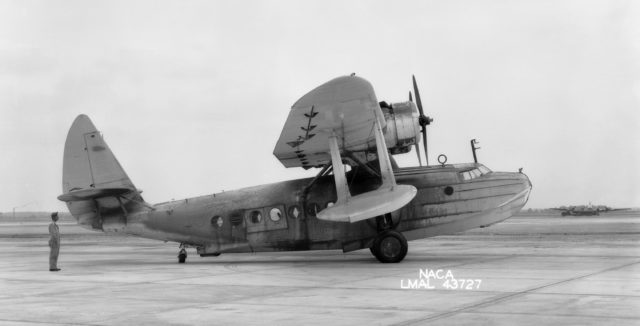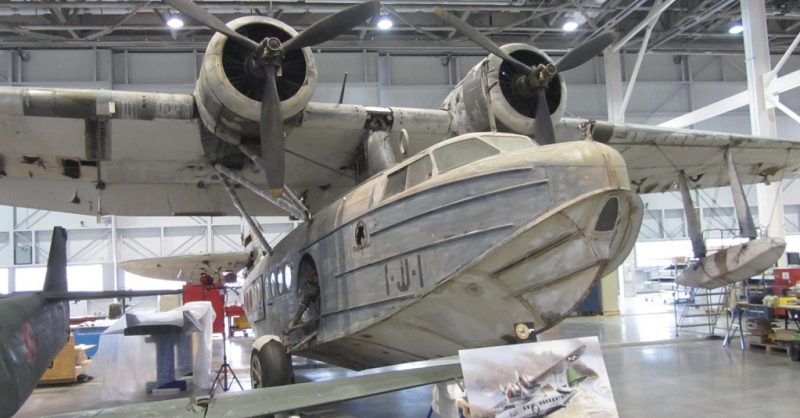On the 75th anniversary of the Japanese attack Pearl Harbor, there was a plane with a unique story to tell. It is one of the few planes to have flown against the Japanese on that day. With its silver and orange-yellow paint scheme with a bright green tail and red trim, it wasn’t the most likely combat aircraft.
It was designed to be a small airliner for transporting troops, mail, and photographers around Hawaii. It had a boat hull for landing and take-off in the water and big tires for landing and taking off on a runway. The plane was piloted by Ensign Wesley Hoyt Ruth.
“The fact that Ruth got out and got back is . . . absolutely amazing,” says Smithsonian museum specialist Pat Robinson.
Robinson said that the plane would not have survived if it had found the Japanese fleet. It was also fortunate not be shot down by the Americans as they returned to Pearl Harbor.
It’s also amazing that the plane was not sent to the junkyard for scrap. “Somewhere . . . someone looking at the log books realized the significance of the airplane, and where it had been,” and alerted the Smithsonian, which retrieved it from military storage, Robinson said.
“It’s a huge deal, to have this here,” he said. “It represents American involvement in the Second World War. It was there when it started.”
The Smithsonian wants to restore the plane, but there are a lot of planes in line ahead of it. The plane was built for the Navy in 1938. It was built at the Sikorsky plant in Stratford, Connecticut. It’s a big plane with two huge propeller engines in the wings, a hatch in the nose for photography, and porthole-type windows.
The museum curators found an old emergency water purification kit and the rusted keys to a lockbox in the radio compartment.
The plane was part of a squadron based on Ford Island in the middle of Pearl Harbor.
Ruth was having breakfast in his bachelor’s quarters at the time of the attack. He thought that it might be a drill until he saw the bombs.

His son, Thomas A. Ruth II, said that his father was an experienced aviator who could fly anything.
Ruth survived the war, but his brother, Thomas, who was also a Navy pilot was killed when he was shot down in the South Pacific in 1943.
Ruth grabbed his coat and jumped into his convertible and drove as fast as he could toward the airstrip to avoid being hit by enemy fire. As he reached the runway, the USS Arizona exploded, showering the area with pencil-sized gunpowder pellets.
Once the attack ended, the Americans wanted to find the fleet that had attacked them. A senior officer told Ruth to take the first plane and go find them.
Ruth piloted the plane, and Emery C. “Pappy” Geise, 35, was his co-pilot. Oscar W. Benefeil Jr. worked the radio and Amos P. Gallupe was the plane captain. Two other sailors joined them on the flight.
Before takeoff, the senior officer provided three Springfield rifles. Ruth said, “we would have had to shoot through the windows.”
They took off in the brightly colored plane and headed north.
They flew for hours and covered 250 miles but didn’t see anything. The enemy fleet was in the Pacific, north of Hawaii, but the crew made no contact. The next task was to get back home without being shot down by nervous soldiers from their own side. According to historians, numerous US planes were shot down by anxious US anti-aircraft guns.
Luckily, they landed back at the airstrip safely.
After that, the plane was sent to a base in California and then given to a forerunner of NASA for testing. It was placed in storage after that and then sent to the Smithsonian when the historical importance of the plane was realized.
Ruth passed away at the age of 101 in Matthews, NC. He was buried in Arlington National Cemetery in January, The Washington Post reported.
Because of his bravery at Pearl Harbor, Ruth earned the Navy Cross, their second-highest honor.
“Although contact with the enemy meant almost certain destruction,” his citation reads, Ruth’s courage, airmanship, and skill “were at all times inspiring and in keeping with the highest traditions of the United States Naval Service.”
